[The first in the series of essays I decided to write about the canon: one essay per volume. One of these days I will consolidate them into a book, but for now, if you’re new to The Aubrey-Maturin Review, here are my thoughts on the first and, for some, best of Patrick O’Brian’s novels about the unlikely friendship of John Aubrey, RN and Stephen Maturin, MD. If you’re new to the books, and find yourself a bit overwhelmed by the language, I hope these thoughts will be of some use to you! A final note, anticipating the last footnote: I don’t care about spoilers, and neither should you, but if you do care, and you haven’t yet read Master and Commander, you should be aware that I reveal major details of the plots of each novel in almost every essay I write. Caveat lector.]
1
Language is a writer’s preoccupation, but the language of Patrick O’Brian preoccupies his readers to an uncommon degree. Every would-be Aubrey-Maturin fan must quickly decide what their relationship is going to be to passages like this one:
“Helm’s a-lee,” he remarked—the cry usually echoed from one horizon to the other. Then “Off tacks and sheets.” He heard the bare feet hurrying and the staysail sheets rasping over the stays: he waited, waited, until the wind was one point on her weather bow, and then a little louder, “Mainsail haul!” She was in stays: and now she was paying off fast. The wind was well round on his other cheek. “Let go and haul,” he said, “and the half-seen waisters hauled on the starboard braces like veteran forecastlemen. The weather bowlines tightened: the Sophie gathered way.
I’ll be damned if I could paraphrase, even loosely, what’s going on, except on the most brute and obvious level: the sloop and crew under Jack Aubrey’s command is doing what he asked them to do, and they’re doing it well, and the sloop is moving. Some readers set themselves up with secondary sources or Google assiduously until they understand the distinction between sheets and stays, halyards and braces. More readers, I suspect, let the music of the sea-jargon wash over them, in the same way in which one can enjoy a Bach fugue without knowing the first thing about counterpoint. Still other potential readers find the sea-terms an insurmountable barrier to their enjoyment, and they put the book down—or, intimidated by the books’ reputation, never pick them up in the first place.
(If you’re in the latter camp, I highly recommend the audiobooks—I am a partisan of Patrick Tull’s narration. Somehow it matters less whether I understand a particular bit of jargon if it’s pronounced with sufficient vigor and élan. I could say more about Tull and his tremendous virtues as a reader—and why I infinitely prefer him to the unctuous Simon Vance—but that will have to wait for a future post.)
O’Brian’s sea-language is the indelible substrate of his narrative; I believe we’re supposed to be overwhelmed into accepting it as testimony to the reality of the world we’re inhabiting—the living presence of a seemingly archaic past.1 The representative of our bewilderment is Stephen Maturin, the second of the series’ two protagonists; though the sea is Captain Jack Aubrey’s native element, his friend Dr. Maturin is an irredeemable lubber. His inability to understand or retain even the most basic nautical information is one of the series’ many running gags—which makes him a reliable stand-in for the reader, whether one picks up the first volume or the twentieth. Early in Master and Commander, Stephen is given a tour of the Sophie by a kindly midshipman, and we are presented with a sly metaphor for the role played by O’Brian’s jargon. Stephen has followed Mr. Midshipman William James Mowett into the maintop, high above the deck of the Sophie, and he is abjectly terrified, not only by the height but by the roll that has the two of them seesawing through the air, sometimes over the deck and sometimes over the sea.
“The masts need support, then?” asked Stephen, stepping cautiously across the platform and patting the squared top of the lower mast and the rounded foot of the topmast, two stout parallel columns—close on three feet of wood between them, counting the gap. “I should scarcely have thought it.”
“Lord, sir, they’d roll themselves overboard, else. The shrouds support them sideways, and the backstays—these here, sir—backwards.”
“I see. I see. Tell me,” said Stephen, to keep the young man talking at any cost, tell me, what is the purpose of this platform, and why is the mast doubled at this point? And what is this hammer for?”
Like most of O’Brian’s readers, Stephen does not attend to or retain much of Mowett’s earnest explanations of the sloop’s rigging. He simply asks that Mowett keep talking,2 so as to preserve him from the sensation of vertigo that threatens to cast him overboard or send him plummeting fatally to the deck. “You could not explain this maze of ropes and wood and canvas without using sea-terms, I suppose,” Stephen muses, before concluding, “No, it would not be possible.” Language is the sustaining river on which he, like the reader, floats along. We are welcome to dip beneath the river’s surface if we choose, to bring ourselves that much closer to Jack on the axis from thorough knowledge to total ignorance. But the surface tension of O’Brian’s flow is strong enough to bear us along.
2
Master and Commander begins with music, and a moment of discord that suggests an alternate and indeed more probable history in which the shipless Lieutenant Jack Aubrey, R.N., and the penurious Stephen Maturin, M.D., never actually become friends. The first of April, 1800 finds them seated next to each other in the music-room of the Governor’s House in Port Mahon, located on the island of Minorca off the coast of Spain. They are listening to a very credible performance of “Locatelli’s C major quartet,” a piece of music as fictional as our heroes themselves. Jack, carried away by his enthusiasm for the performance, receives an elbow in the ribs and a “shshsh hissed in his ear” for the crime of beating the time with his fist. “A nudge, a thrust of that kind,” reflects Jack by means of O’Brian’s cagey free indirect narration, “so vicious and deliberate, was very like a blow.” Cause, in other words, for him to demand satisfaction from the colorless civilian, the “ill-looking son of a bitch” by his side. When the music ends, the two men exchange, with frigid politeness, their addresses, so as to render the expected duel more convenient. And that is, or might well have been, the end of their acquaintance.
The friendship between Jack and Stephen is the core, the beating heart, of a series of novels with much else to recommend them: derring-do, dry humor, Thoreauvian natural history, a bit of romance, and a level of nautical, military, and historical detail that achieves a degree of apparent authenticity surpassing the effect created by any other historical or fantasy novel that I have ever read. It is an unlikely friendship, a friendship of opposites, and on that opposition rests its appeal: the fantasy of harmonizing body and mind, social care and solitary inwardness, intuition and erudition, openness and secrecy.
Should the threatened duel take place, it would be difficult to give odds on it. Jack is a seasoned military man, used to bloodshed, and Stephen, as he is presented in this first novel, is a pacific creature: “I deprecate violence.” In later books, however, we discover his astonishing deadliness: he is a crack shot, the veteran of many duels, “reptilian” in the face of enemies. At one point in a later novel, positively aswim in the blood of a pair of French spies he has dispatched with surgical precision, we find him quipping facetiously to himself, “It’s like the end of Titus Andronicus!” Even odds, then.
But let us suppose that Jack and Stephen were to meet again without violence—they would still to all appearances have little to say to one another. Jack is a tall, blond, half-educated, cheerfully extroverted Englishman, inclined to corpulence and sensual pleasures, a Tory who has rarely had cause to question the order of things as expressed by the naval hierarchy upon which his being depends. Stephen is short, slight, pale and secretive, with colorless eyes and an unprepossessing face, vastly learned in the classics and natural philosophy as well as medicine; furthermore, he is the bastard son of an Irish officer and a Catalan lady, at home everywhere and nowhere, touchy and devious by turns. What could two such dissimiliar men whose acquaintance began in an atmosphere of mutual hostility possibly have to do with each other for an evening, let alone the rest of their lives?
Their author has other ideas. Aubrey leaves the concert for his room at the Crown (an inn that does its level best to replicate Merrie Olde England in spite of being Mediterranean) where a letter awaits him—such a letter as we all dream of receiving at one time or another. It brings news of his promotion, from half-pay lieutenant to master and commander of His Majesty’s Sloop Sophie. The transformation this news wreaks on Jack’s melancholy mood (“You are looking very hipped, Jack,” remarks a seagoing acquaintance as he’s leaving the concert) remains the most indelible description of the war between doubt and happiness that I have read:
His eyes took in the whole of this in a single instant, yet his mind refused either to read or to believe it: his face went red, and with a curiously harsh, severe expression he obliged himself to spell through it line by line. The second reading ran faster and faster: and an immense delighted joy came welling up about his heart. His face grew redder still, and his mouth widened of itself. He laughed aloud and tapped the letter, folded it, unfolded it and read it with the closest attention, having entirely forgotten the beautiful phrasing of the middle paragraph. For an icy second the bottom of the new world that had sprung into immensely detailed life seemed to be about to drop out as his eyes focused upon the unlucky date. He held the letter up to the light, and there, as firm, comforting and immovable as the rock of Gibraltar, he saw the Admiralty’s watermark, the eminently respectable anchor of hope.
O’Brian was already in his fifties when he wrote Master and Commander, having published two novels and a number of stories under his birth name, Richard Patrick Russ. He enjoyed a modest literary reputation in Britain, solid but undistinguished. In a sense, Jack’s letter of promotion is O’Brian’s as well, though he couldn’t have known it at the time.
We are only a few pages into the novel, and we are already deep in a drama of interpretation. Jack, having understood Stephen’s elbow jab as something “very like a blow,” is inclined to scrutinize the envelope and seal of the letter with care before he actually opens it; he then parses its contents carefully, wary of the possibility of an April Fool’s joke. The watermark’s “anchor of hope” licenses him to revert to his true self, no longer an irritable and melancholy half-pay lieutenant but a man made for happiness, who will soon capture so many of the enemy’s ships that he will earn the nickname he carries for the rest of the series, “Lucky” Jack Aubrey. Stephen—already crabbed by disappointments political, professional, and romantic—could never plausibly bear such an epithet. But when Jack, still glowing with the knowledge of his felicity, encounters Stephen outside Joselito’s coffee house, his natural goodwill overwhelms them both. He apologizes handsomely for disrupting the concert; Stephen is utterly disarmed by this frontal assault of friendliness. In that moment, a union is forged that will sometimes be tested—severely so in the novel to follow—but never broken.
3
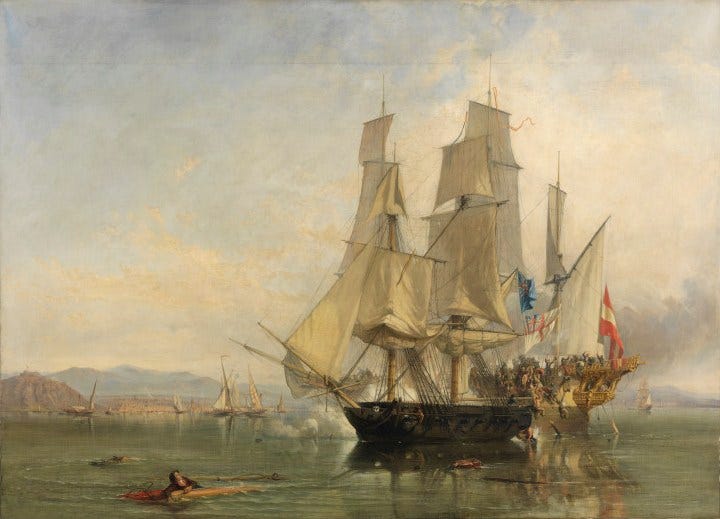
George Bernard Shaw remarked that Britain and the United States were two nations divided by a common language. The same might be said of Stephen and Jack, each of whom is fluent in languages the other can scarcely comprehend. Stephen is almost effortlessly multilingual; he is fluent in French, Spanish, Catalan, and Latin, can understand Irish, and over the course of the series develops a working knowledge of Portuguese, Greek, Malay, Urdu, Arabic, and other languages. Jack’s mangling of Latin tags, by contrast, is one of the series’ many running jokes; his Spanish and French are at best crudely functional; he and his shipmates are always ready to be impressed by Stephen’s ability to “talk foreign.” At times in Master and Commander Stephen’s multilingual fluency (and his as-yet nascent abilities as a spy) are of material usefulness to the Sophie and its crew, as when he adopts a Nordic-accented Spanish to persuade an enemy vessel that the British sloop-of-war is actually a Danish merchantman with plague aboard. But he remains illiterate in the language of the sea—Jack’s native tongue.
Between Jack and Stephen—for much of the duration of this novel, at least—stands James Dillon: like Stephen an Irishman and rebel, like Jack a seaman and a warrior. His divided loyalties torment him: he serves on a King’s ship and can “drink the loyal toast without a qualm,” but as a former member of the United Irishmen he lives in fear of discovery and in anguish over what he perceives to be his squandered honor. When Stephen comes aboard, he pretends not to recognize James, and James reciprocates his feigned ignorance. Life aboard an 59-foot sloop with eighty men aboard makes private conversation impossible. It is not until they are well into their cruise when the two men find themselves alone, aboard a French merchant ship taken as a prize, and thus able to converse in private.
“It is only now,” [Stephen] said in a low voice, that we have the opportunity of speaking to one another. I looked forward to this time with great impatience; and now that it is come, I find that in fact there is little to be said.”
“Perhaps nothing at all,” said James. “I believe we understand each other perfectly.”
What follows is a rehearsal of the test or password that the United Irishmen use to recognize one another—a shibboleth, an exchange of gnomic phrases to separate the sheep from the goats:
Are you straight?
I am.
How straight?
As straight as a rush.
Go on then.
In truth, in trust, in unity and liberty.
What have you got in your hand?
A green bough.
Where did it first grow?
In America.
Where did it bud?
In France.
Where are you going to plant it?
“Nay, I forget what follows. It was not the test I took, you know. Far from it.”
James and Stephen’s conversation—in my opinion the beating heart of the novel—is unusual for the comparative sparseness of its dialogue tags. It is difficult, though not impossible, to discern which character is speaking. (This is even more noticeable in Patrick Tull’s narration, since he uses the same light Irish brogue for both characters.) Who is testing whom? To what degree are James and Stephen, rebels turned King’s officers, mirror images of one another? One will die,3 the other will live on for nineteen more novels: why?
The phrase “mere words” attaches to Dillon twice in the novel, in different contexts. During a gunroom dinner hosted by James, Stephen expresses his irritation at having been appointed ship’s surgeon when he is actually a physician, much as a modern M.D. might bristle at being taken for a chiropractor. This leads to an amiable reflection on the part of the Sophie’s officers on the chimerical nature of their shipboard speech: the Sophie’s rigging makes her a brig, but her being commanded by Jack Aubrey turns her into a sloop; “I am called captain,” Jack says, “but really I am only a master and commander”; the gunroom in which the men dine has nary a gun in it.
“No, no, my dear sir,” said James Dillon, “never let a mere word grieve your heart. We have nominal captain’s servants who are, in fact, midshipmen; we have nominal able seamen on our books who are scarcely breeched—they are a thousand miles away and still at school; we swear we have not shifted any backstays, when we shift them continually; and we take many other oaths that nobody believes—no, no, you may call yourself what you please, so long as you do your duty. The Navy speaks in symbols, and you may suit what meaning you choose to the words.”
This is the first of two chapters in a row in which James Dillon is given the last word. In the chapter that follows, when James and Stephen at last have their private conversation, James reverts again and again to his mistrust and dislike of Jack Aubrey, with an intensity that he cannot explain to his own satisfaction. Perhaps it is due to professional jealousy: Jack is a commander and Dillon, in spite of his considerable merits as a seaman and a fighter, remains a lieutenant. Perhaps it is Jack’s good-humored unthinking bigoted cant against Irishmen and papists, or his zeal for a prize. Perhaps Dillon is aggravated by how completely and purely himself Jack is—undivided, as Dillon (and Stephen) are not. Dillon knows that Stephen likes Jack, tries to avoid insulting him, stumbles. At the close of their evening together, as dawn breaks, he seems perplexed by his inability to explain himself:
“I cannot tell what possessed me to speak so rancorously,” he said, passing his hand over his forehead and looking both unhappy and bewildered. “I do not think I have ever done so before. Have not expressed myself well—clumsy, inaccurate, not what I meant not what I meant to say. We understood one another better before ever I opened my mouth.”
In the preceding chapter, James advises Stephen not to take “mere words” to heart. In this chapter, Stephen gently admonishes James with the same phrase when James frets that serving under “a prize-hunting captain is not the quickest path” to promotion:
“Well, I know nothing of nautical affairs: but I wonder, I wonder, James, whether it is not too easy for a rich man to despise money—to mistake the real motives… To pay too much attention to mere words, and—”
“Surely to God you would never call me rich?”
The interruption is telling: James is unable to understand Stephen’s meaning, any better than he is able to understand his own. He reacts to the personal reflection on his supposed wealth, without catching his own phrase being directed back at him. “To pay too much attention to mere words” is a kind of luxury or vanity; in spite of his own advice to Stephen, James cannot let “mere words” go when it is his own identity that is threatened by them. He is not secure enough in himself to speak the language of friendship, which lets “mere words” go.
Dillon is too literal, too humorless, too shamestruck by his divided loyalties to be friends with Jack Aubrey, or even to be much of a friend to himself. As Stephen later reflects in his diary, Dillon “is obliged to reconcile the irreconcilable more often than most men; and he is less qualified to do so.” Although Stephen wishes he could make Aubrey and Dillon friends, and thinks that “James is made for friendship,” he cannot prevent the two men from perpetually wounding one another: James by perpetually impugning Jack’s honor, Jack by “that particular beefy arrogant English insensibility,” and by his luck. He does come to respect Jack’s courage, and after Jack’s “insensibility” ashore gets him into trouble with both his mistress Molly Hart and her inimical husband—Jack’s immediate superior—both men, for different reasons, are “burning for the uproar and the more than human liberation of a battle.” They find what they’re looking for in Jack’s audacious attack on the Cacafuego, a Spanish 36-gun xebec frigate by which the Sophie is both outgunned and outmanned.
Remarkably—the action is based on the real-life capture of a Spanish frigate by Thomas Cochrane, one of the models for Jack—the attack succeeds and they manage to board and take the larger vessel, though it has 300 crewmen to the Sophie’s fifty-odd. Jack is cut up pretty severely in hand-to-hand fighting, but survives; once again, and for the last time, it is James Dillon who is the subject of the chapter’s final sentence: “When Jack picked him up he thought he was only hurt; but turning him he saw the great wound in his heart.”
4
If Jack Aubrey is the ego ideal of many men—honest, decisive, a natural leader, consistently courageous in the face of danger and hardship, and tactically brilliant (at sea, anyway; his best qualities tend to desert Jack ashore)—then Stephen Maturin is something closer to the reality—a writer’s reality, anyway. Jack is a man of action, a man of intensely physical life, touchingly ingenuous in many respects, true to his mentor Nelson’s oft-repeated remark, “Never mind maneuvers; just go straight at ‘em!” Stephen, on the other hand, is contemplative, withdrawn, sometimes staggeringly awkward, self-conscious, and complex. Occasionally, O’Brian delivers his heroes thoughts through their own documents: in Jack’s case this takes the form of personal letters, but Stephen writes in an encoded diary, poignantly described in a later novel as the substitute for the “loving ear” that he lacks. There is no perfect interlocutor for Stephen save an invisible one: the reader of the novels. I certainly feel a greater affinity for Stephen than for Jack, though the latter would undoubtedly be better company at a gunroom dinner.
Dillon’s death clears the way, in a sense, for the unlikely friendship between Aubrey and Maturin to deepen and flourish. In spite of their similar backgrounds, Stephen will never become, as Dillon was, the prisoner of words. After the action with the Cacafuego, when Jack is brooding over his failed relationship with his dead lieutenant, he marvels over Dillon’s lack of stereotypical Irish qualities, before realizing, abashed, whom he’s talking to.
“My dear fellow, my dear Maturin, I do beg your pardon. I say these damned things… I regret it extremely.”
“Ta, ta, ta,” said Stephen, taking snuff and waving his hand from side to side.
Stephen’s gesture of dismissal, which does not resort to actual words, speaks his deep affection for Jack and a willingness to forgive him his trespasses. It is still comparatively early in their acquaintance; the Aubreyad is scarcely begun. But a man as well read as Stephen might well be thinking of what Montaigne has to say about friendship and its mysteries:
Si on me presse de dire pourquoi je l'aimais, je sens que cela ne se peut exprimer qu'en répondant: parce que c'était lui; parce que c'était moi.
“If pressed to say why I loved him, I feel that I could not better express myself than by responding: because he was he, because I was I.”
I am tempted to connect the role of O’Brian’s sea terms with linguistic anthropologist Bronislaw Malinowski’s 1923 essay “The Problem of Meaning in Primitive Languages,” in which he develops the concept of “phatic communion”: language that is in effect context rather than text, by which a tribe is bound together. Although Stephen Maturin, like most of O’Brian’s readers, will never fully understand the text of the sailors’ speech, they can still take part in the communion of the context and thus feel themselves part of the peculiar seagoing community of which they are a part. Every reader willing to accommodate Jack Aubrey’s sea-language, becomes, in effect, his shipmate.
It so happens that Mowett is a poet, in the eighteenth-century style, a fitting role for the first character to introduce readers to the dimensions of the Sophie’s wooden world, kelson to maintop, stem to stern. Here’s a sample of Mowett’s verse:
O’er the ship the gallant bosun flies
Like a hoarse mastiff through the storm he cries.
Prompt to direct th’unskilful still appears,
The expert he praises, and the timid cheers.
But of course the real poetry of O’Brian’s novels is in its sea-language.
Spoiler alert: I will have no regard for spoilers in this or any other piece I write about the Aubreyad. I write as a fan who’s read each novel in the series at least three times, in pursuit of the question as to why they have given me more consistent pleasure and for longer than nearly any other books in a very bookish life. I’m interested in how these books move, and why, not so much in what happens; I will show no compunction about disclosing aspects of the plot(s). If that bothers you, read no further!


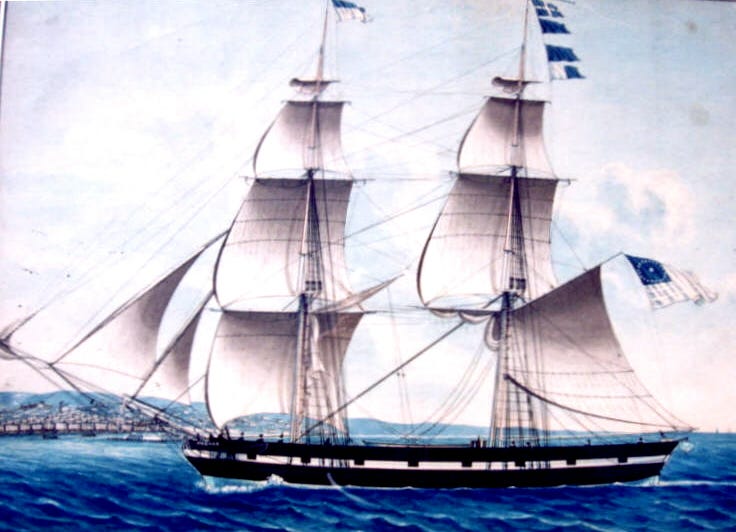
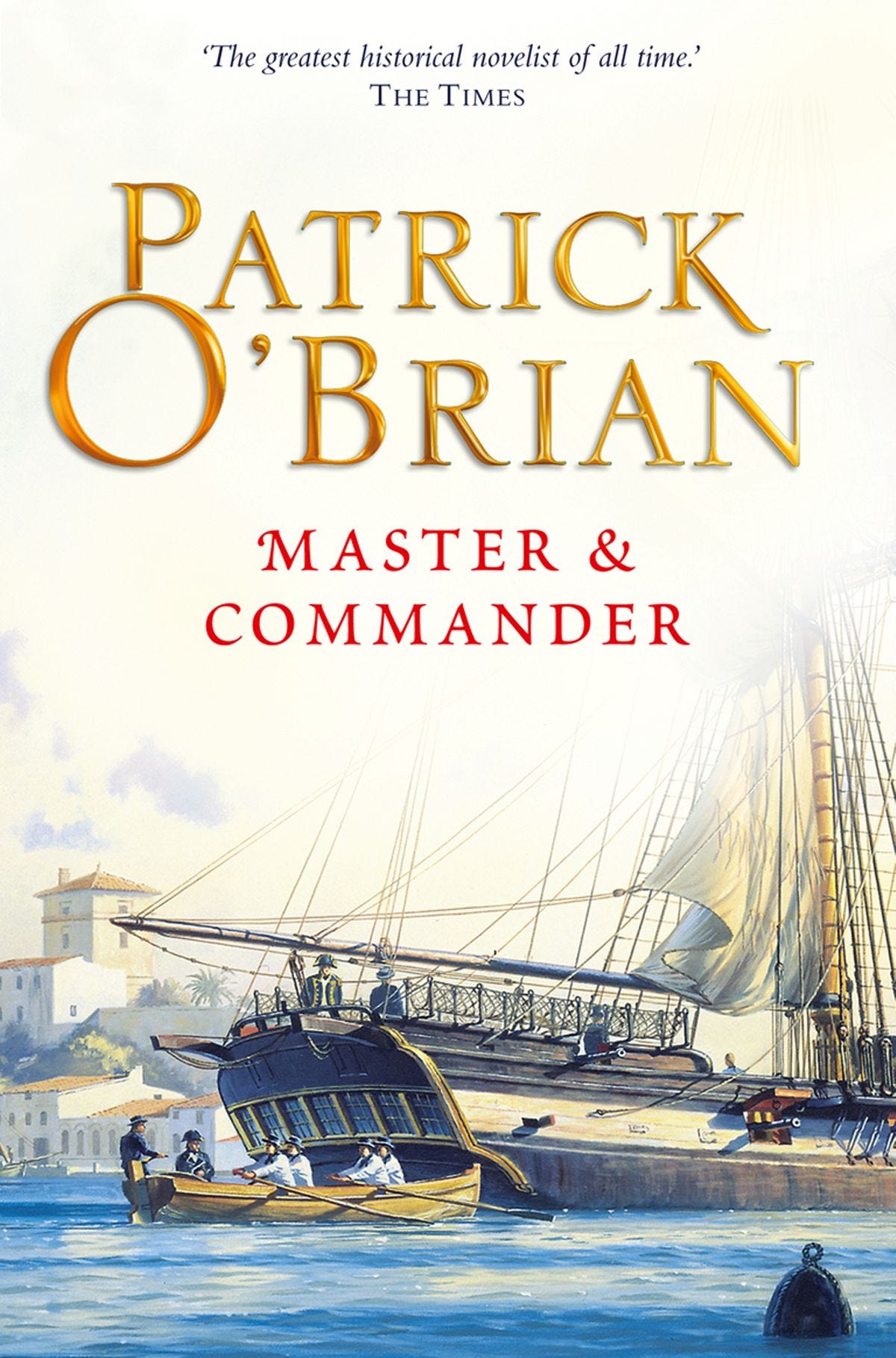
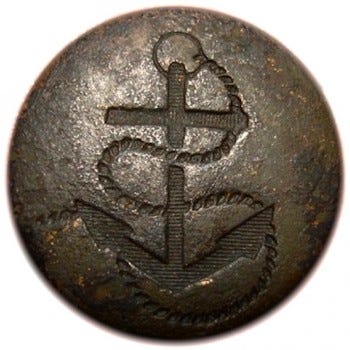
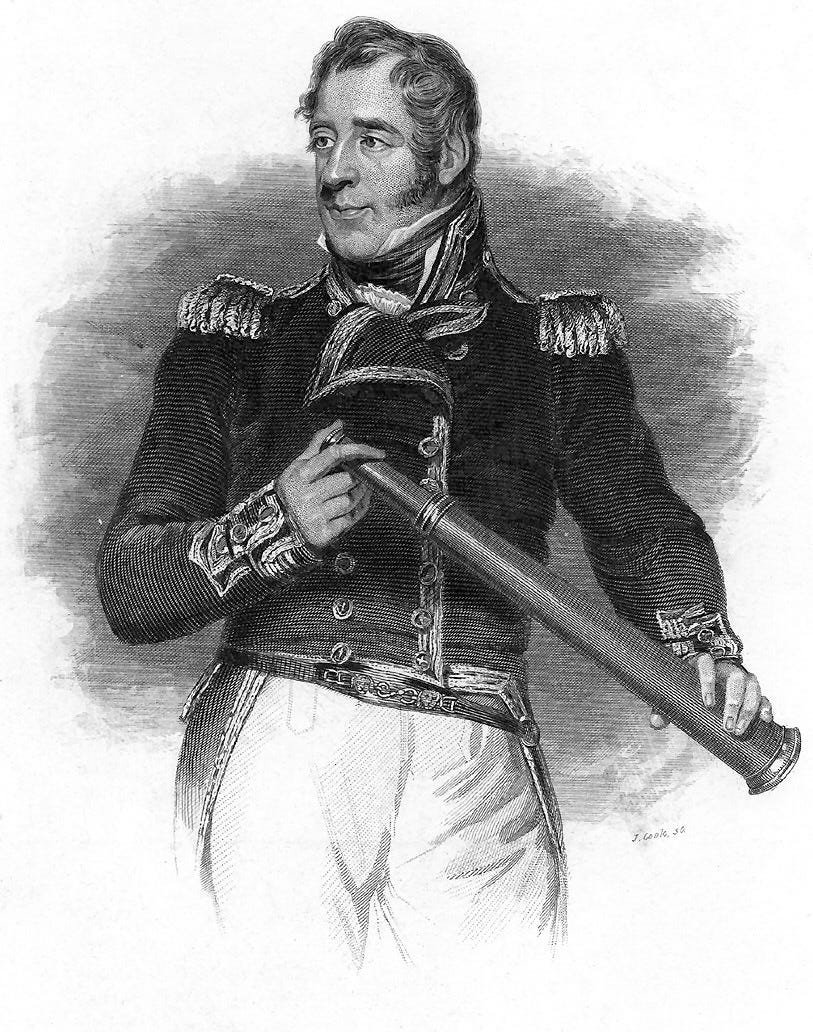
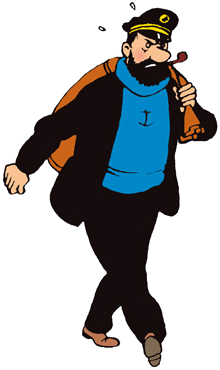
This was a delight to read, partly because I've never read a review of this book before that notices and loves so much of the same stuff I noticed and loved:
* the theme of communion/communication, musical as well as verbal (music is described using very verbal terms, as if it was an essay or conversation; James Dillon is tone-deaf and admits "you know what a sad waste music is on me"), the desire for love/understanding and the risks of seeking it out - rejection, miscommunication, talking past each other. I think this theme is especially explicit in the first book, where James and even minor characters such as Cheslin the sin-eater repeat the themes of alienation/secret-keeping and rejection, highlighting how exceptional is the solid friendship Jack and Stephen form: they can communicate almost perfectly in music, and though outside of it they constantly fall afoul of each other's deeply differing worldviews, vocabularies, and areas of expertise, those miscommunications rarely matter because each one understands the other's goodness at heart.
* Stephen being a much more relatable character than Jack - probably to the author, certainly to us, and maybe to a surprising amount of this series' fans, even though Aubrey is the more public face of the series and the idea is that most of the fans are sailing enthusiasts. In theory Jack should be a much easier character to understand, but it took me a lot longer to get him than to get Stephen - at that time I'd never known anyone like Jack, whereas we've all been Stephen at some point. For all his faults Jack is something like - to use a phrase from this book, a "merely ideal interlocutor."
* a little detail, Stephen's ability to speak Spanish (his what, third language?) with a plausible Nordic accent (he speaks no Nordic languages at the time), which is insanely impressive yet I've never seen anyone else mention it.
It's also delightful because you say it all much better than I could say any of it, and connect it with other writing I didn't know about (like Bronislaw Malinowski's essay) which deepens my perspective of the series.
Thanks for this piece.
Error of fact worthy of correction:
The SOPHIE is absolutely positively NOT a "59 foot" sloop. POB describes her as the ex (captured from Spain) VINCEJO whose dimensions are well known:
1. Launched: circa 1798
2. Length (this is probably on waterline, LWL, if not specified as any other length): 91' 5-1/2" ie 27.9 meters
3. Keel (this is a fictional number used only to calculate tonnage without regard complex volumetric curves, but could also be thought of as appropriately the longest dimension of the straight part of the true keel, ie if vessel were used by God as a rubber stamp or wax seal this is the mark she might make if gently pressed an inch into your lawn before He lovingly returned her to her native element): 82 feet
4. Beam (width at widest): 25' 2"
5. Hold (this is a real number measuring from the bottom of the deck to the top of the floorboards, if any, above ribs, at absolute deepest point in storage hold, which can be thought of as the height of the tallest object one might store below): 10' 10"
6. Tonnage: 276.5 tons of exterior water displacement (97.8 gross register tonnage ie internal volume, in which 1 GRT = 100 CuFt air volume interior).
7. Crew: About 100
Drawings of the hull of VINCEJO aka VENCEJO are available online.
Note that while SOPHIE is literally identified by POB as the ship above, what Jack accomplishes with her is modelled on Cochrane's prodigious exploits with SPEEDY, which was quite smaller but still 78' 3" LWL.
Note also length on deck (LOD) is greater than LWL by the overhangs which may be significant and vary between era and cultures; and sparred length overall (LOA) measuring from the tip of bowsprit to the taffrail overhang, or main spanker/driver boom [depending how rigged] is vastly larger by perhaps +75 feet or more. There is also the concept of Hull LOA distinct from Sparred LOA where the hull's overall maximum is taken from the outside of the bow and stern rails ie at thigh height on vessels this size (over head height on some larger ships eg CONSTITUTION at the waist so as to obscure and protect crew on deck from direct fires); and this would be a "straight string" line through empty space not parallel with the waterline or any other length measurement, whereas the length on deck is in fact a shallow curve following the actual deck, which you might think of as the difference between the shape of a strung bow and chord of its bowstring.
This is not academic. It's an enormous difference between "59" and say 100+ LOD and 150+ LOA. Or more:
For example I sailed aboard a 19th century fishing schooner ERNESTINA (ex EFFIE M. MORRISSEY) roughly comparable SOPHIE and likely identical to the privateer LIBERTY from 'The Fortune of War' as both built in Massachusetts for the same purposes by the same families or at least, similar, traditions. ERNESTINA measures LWL 93' LOD 106' and sparred LOA of 156' in the 20th century but had once been when new and adapted for naval service fully 178' LOA (ie when carrying a longer bowsprit and/or main boom in her heydey). If we guess the fictional "keel length" might be about 60 feet ie similar to the number you give here. Thus I trust you can see the interrelationships between 60/93/106/156-178 feet. The latter being the minimum interior length of an imaginary box you could fit the sparred vessel within while her fore-and-aft rigged spars trimmed for maximal length, ie as if for inspection or drawn in 2D, which is approximately the same as when sailing a beam reach in both a schooner and this type of small brig rig.
Overall, in conclusion, the SOPHIE is much, much larger than you have misinformed your readers in this post. I encourage you to read the book so as to revisualize! Always nice to have an "excuse" to re-read.
Lastly, setting this all aside, it is totally out of the question that 80 men could ever fit aboard a 60' vessel as they could scarcely have room to stand (Sardines ain't in it!) nevermind sleep, work, or crew guns. I should think even RINGLE is much longer than that but I don't recall. Do you?